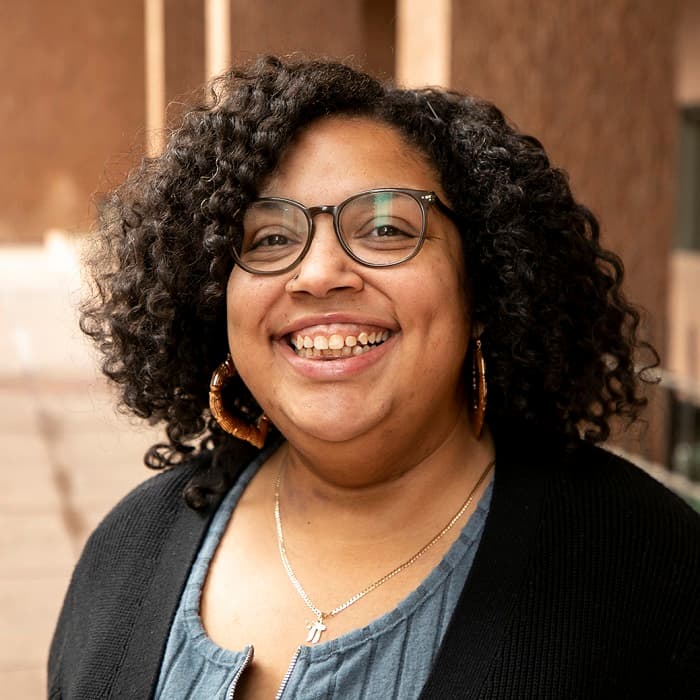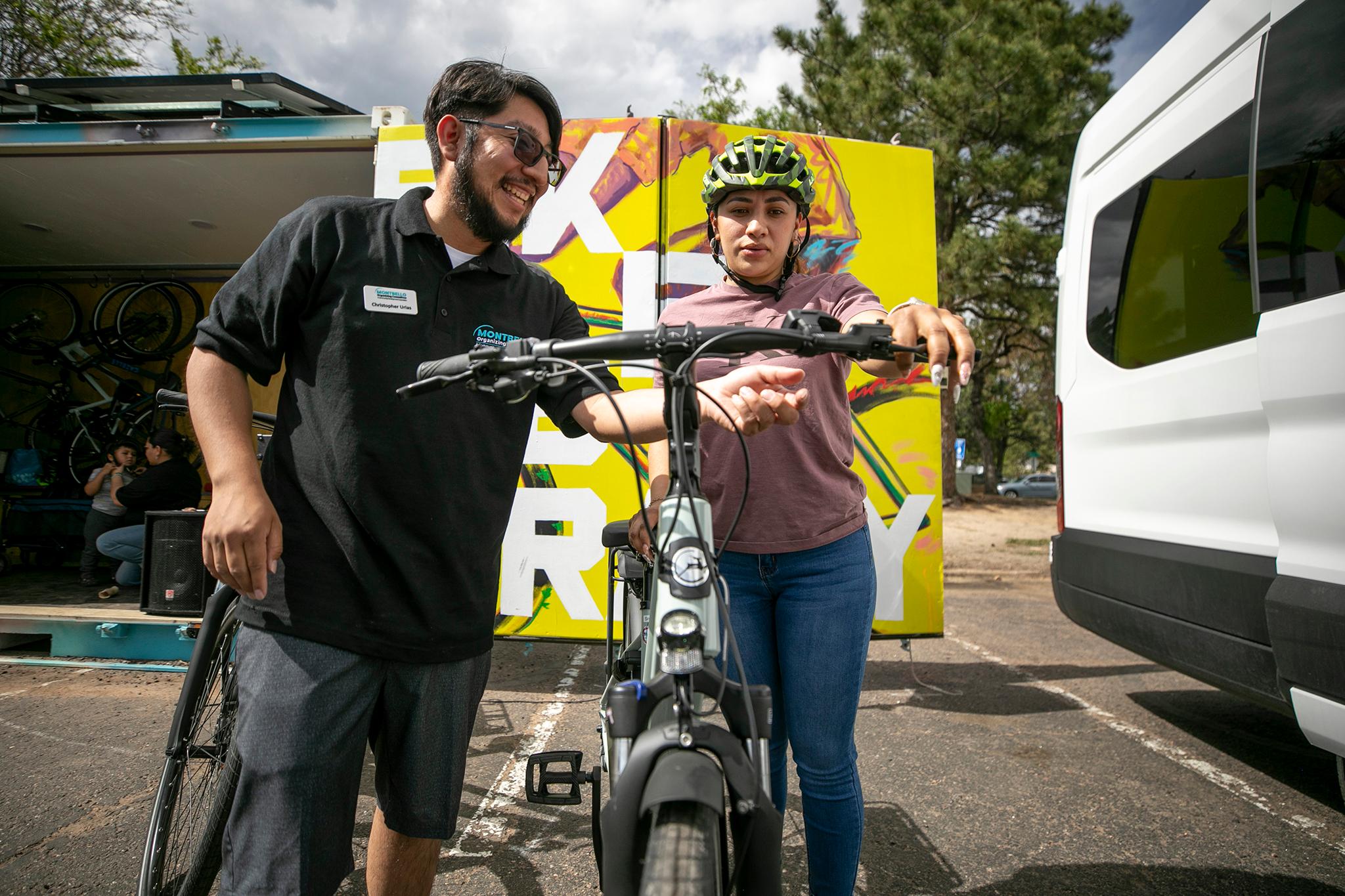What do you do if you live in a transportation desert?
Public transportation is slim to none. Your neighborhood doesn’t have access to ride-share bikes and scooters.
One answer: Bring in your own form of transportation.
That’s what neighborhood leaders in Montbello have done with the launch of their e-bike library and community e-van rental.
Last week, the Montbello Organizing Committee celebrated the opening of their e-bike and e-van rental program, as well as the installation of new charging stations.
'We needed to create something for ourselves'
Smithsonian Magazine defines a transportation desert as a place "where demand for transportation exceeds supply."
A certified transportation desert, the Montbello neighborhood is in Denver's far northeast corner — emphasis on "far." In Montbello, there are limited ways to get around and get to the neighborhood.
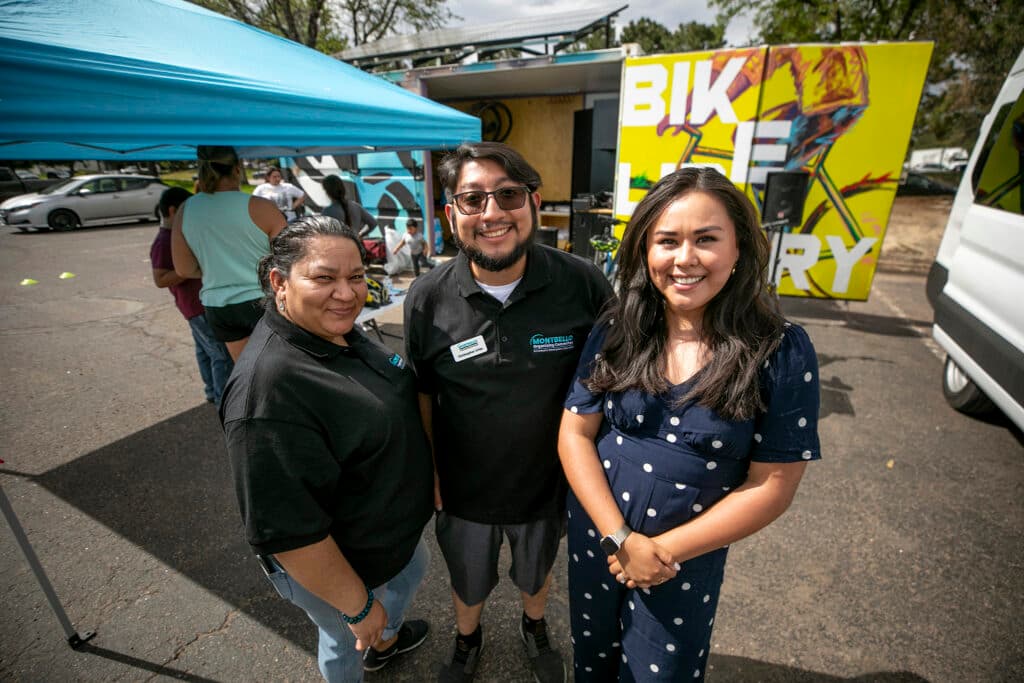
Meanwhile, many residents depend on limited public transportation.
“We’re secluded out here and when you don't have a lot of options to move around, it really limits your opportunities,” said Mayra Gonzales, MOC's chief impact officer. “We found that Montbello is really this desert for a lot of things, including electric mobility infrastructure … So, we decided that we needed to create something for ourselves.”
In 2020, the city’s Office of Climate Action, Sustainability, and Resiliency performed a Community-Based Needs Assessment in Montbello to look at the area’s mobility needs and identify any issues in increasing mobility, specifically electrified mobility solutions.
The study determined that Montbello wasn’t very accessible and didn’t have the infrastructure for electric mobility.
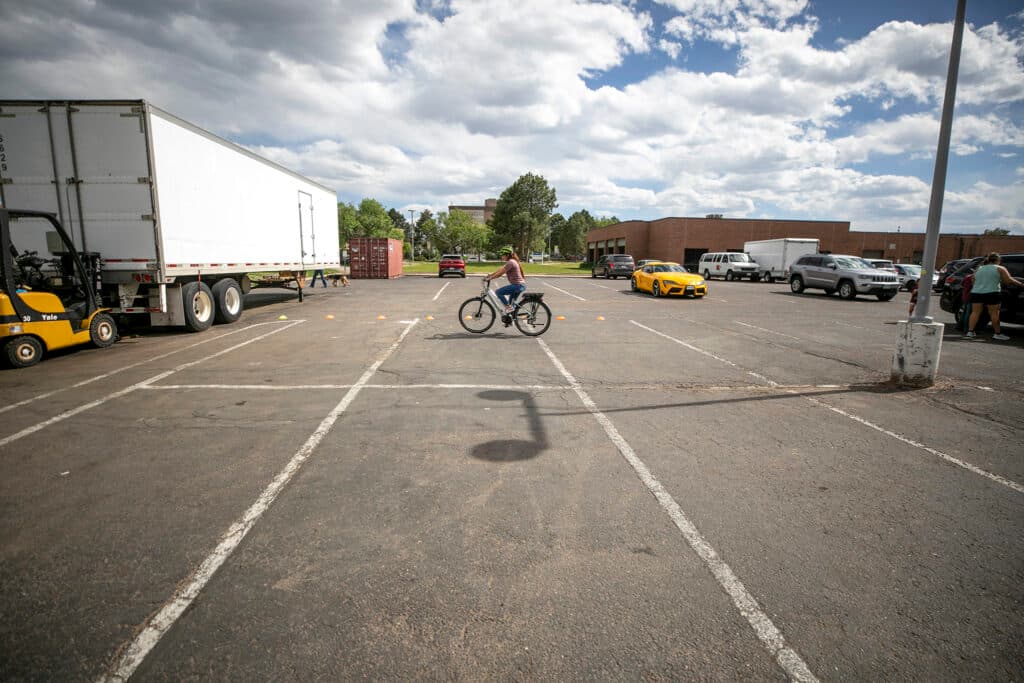
This isn't Montbello's first transportation initiative
That same year, MOC and other community partners developed the Montbello Moves initiative to help address the transportation challenges.
Another way the city has helped is through the Montbello Connector, now known as the Denver Connector.
Through the Connector, residents could call or text the service, be picked up in the neighborhood and dropped off somewhere within the neighborhood for free.
While the Connector is useful, Gonzales said the service only takes residents around Montbello. If folks need to go to work or attend an appointment outside the neighborhood, there are still few transportation options.
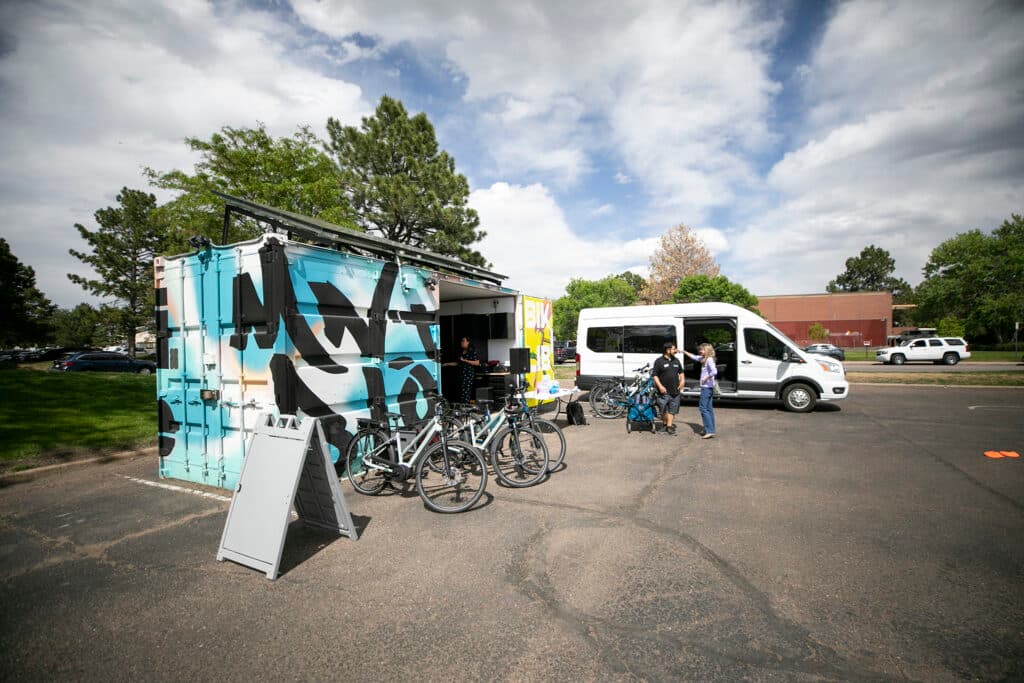
“What we were finding, and something that our partners who helped us design the [Connector] program were saying is that's awesome but we can't leave Montbello,” Gonzales said. “We still have no options if we don't own a vehicle.”
The idea for the e-bike library, as well as the e-van rental and the installation of charging stations, emerged through the study, the initiative and some funding.
That became one part of the transportation solution that would provide a way for folks in Montbello to get around and head outside of the neighborhood.
So, what’s an e-bike library?
It’s a fleet of e-bikes residents can rent out.
Denver currently has three e-bike locations run by Northeast Transportation Connections, a nonprofit that aims to increase mobility resources in underserved communities. Their libraries are located in Sun Valley, Globeville and Elyria-Swansea.
With the help of Transportation Connections, Gonzales said MOC was able to mold their program to their needs.
MOC’s fleet consists of 10 bikes that will be housed inside a solar-powered shipping container at the Montbello Community Building, 12000 E. 47th Ave. With the container being solar-powered, the bike batteries can charge for free.
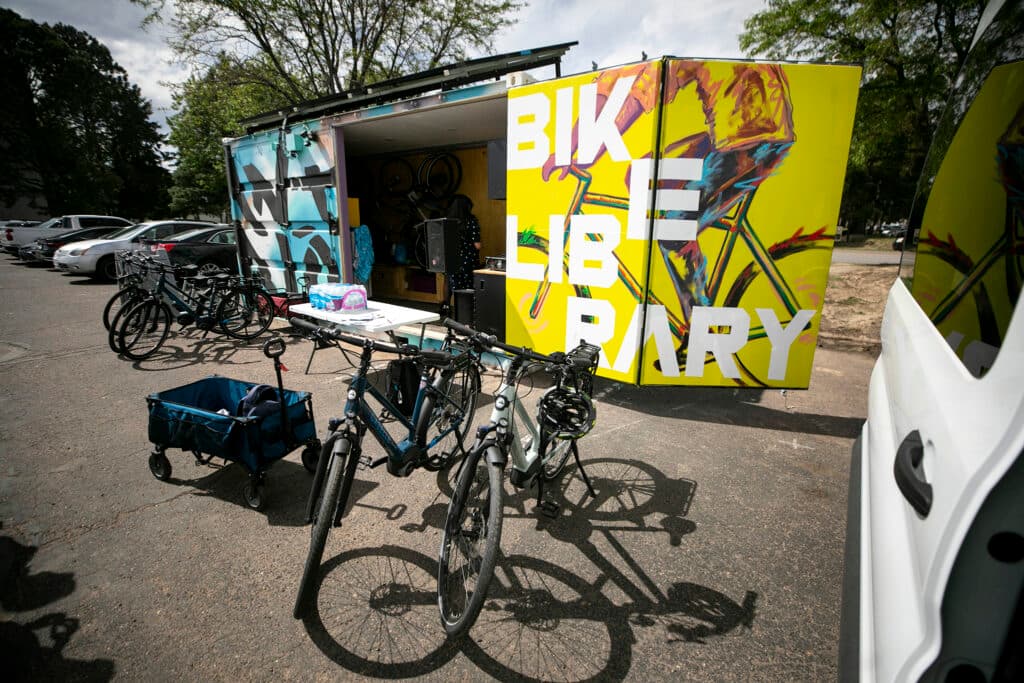
Residents can rent the bikes, through MOC’s website, for up to three days, as well as helmets. The bikes are Class 1 Gazelles that don’t have a throttle for safety reasons, Gonzales said. This way no one accidentally uses the throttle instead of the brakes, which on motorized bikes are typically near each other. Each bike has a ton of lights and a bell for additional safety measures.
“This is so if someone has never ridden a bike or e-bike, it’s easier to get used to,” Gonzales said. “We want to instill safe practices in everyone.”
Gonzales said there will also be a bike mechanic on-site to assist with any e-bike needs but will also be available for those who need help with their traditional bikes, such as fixing a flat or tightening their brakes.
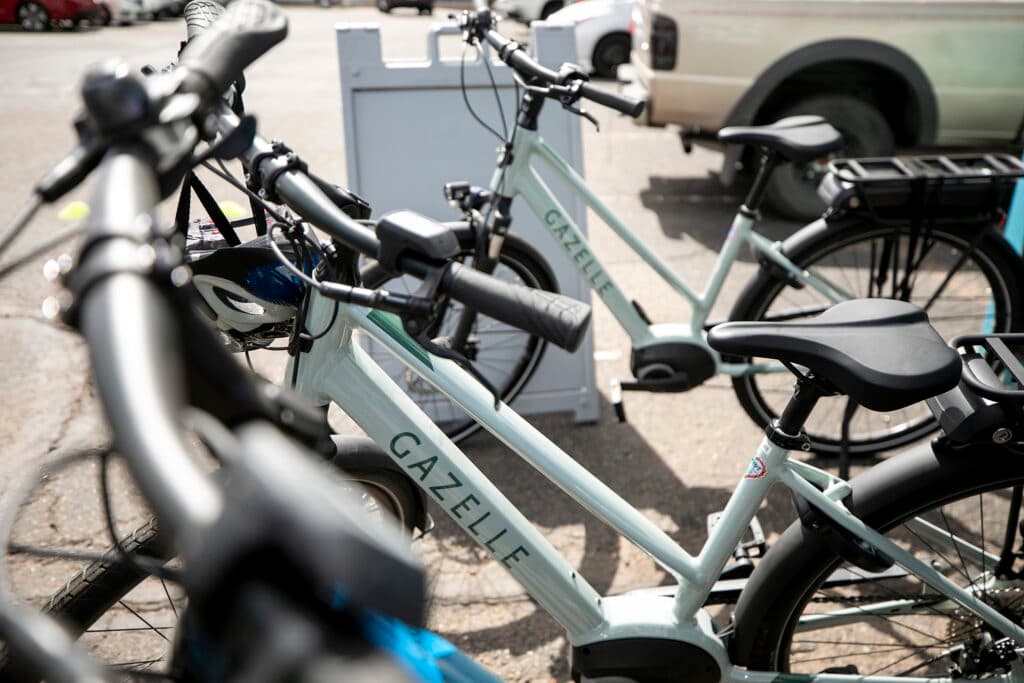
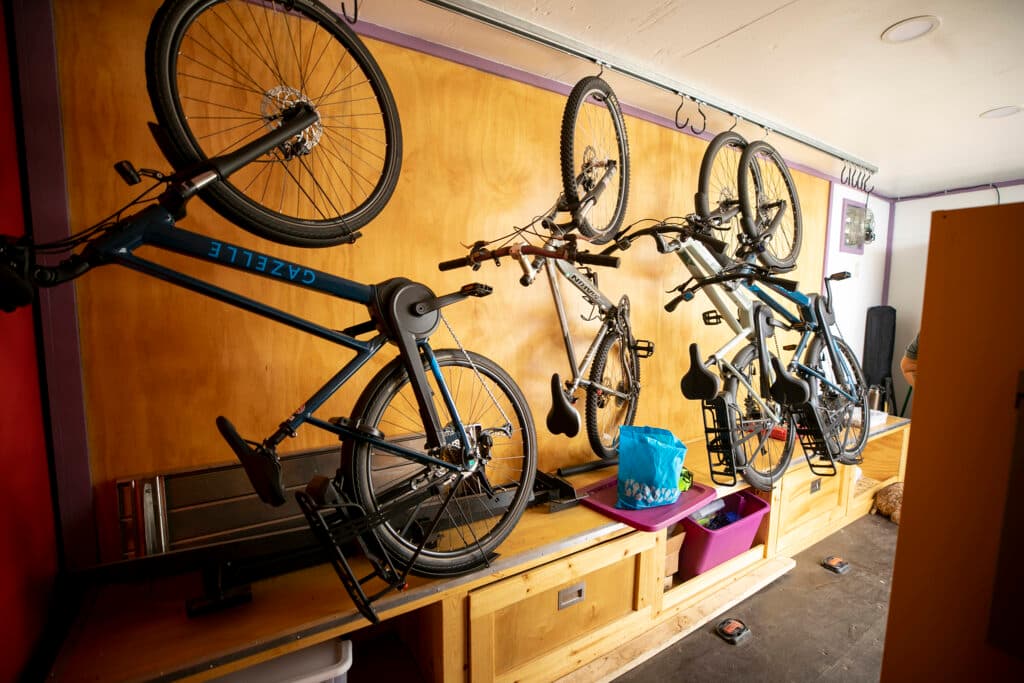
While the main goal of the program is to provide a new transportation method, Gonzales said the vision is to create a community hub where residents can learn more about how to bike and bike responsibly.
Gonzales said the program is in the piloting phase as MOC learns about charging and maintenance needs, along with community needs. She said eventually the program would allow people to rent the bikes for up to a month and more bikes will come online, including cargo bikes.
For now, the chargers will remain on site but will also eventually be loaned out to the renters. But the installation of new neighborhood charging stations at the ELK Education Center, 12680 Albrook Dr., will help supplement the need for charging.
And what about the e-van?
Community-based organizations will use the wheelchair-accessible van. (Capacity is 10 people, or seven if there’s a wheelchair passenger.)
Neighborhood groups can sign up for the program through MOC and use it to transport their participants.

For example, Gonzales said groups such as the Colorado Changemakers Collective have already signed up for the program and intend to use it during their summer camp field trips.
“For our community partners, when they want to take multiple people out with them, they couldn’t do it … because there's not a vehicle for them to use for all of their members to go,” Gonzales said. “Now this is a service that they can take advantage of.”
During last week’s celebration, a few community members took a spin around the parking lot to see how the babies rode.
Maira Gallegos hopped on a bike that matched her outfit.
She said the program was great, bridging a transportation gap while also getting people outside again.
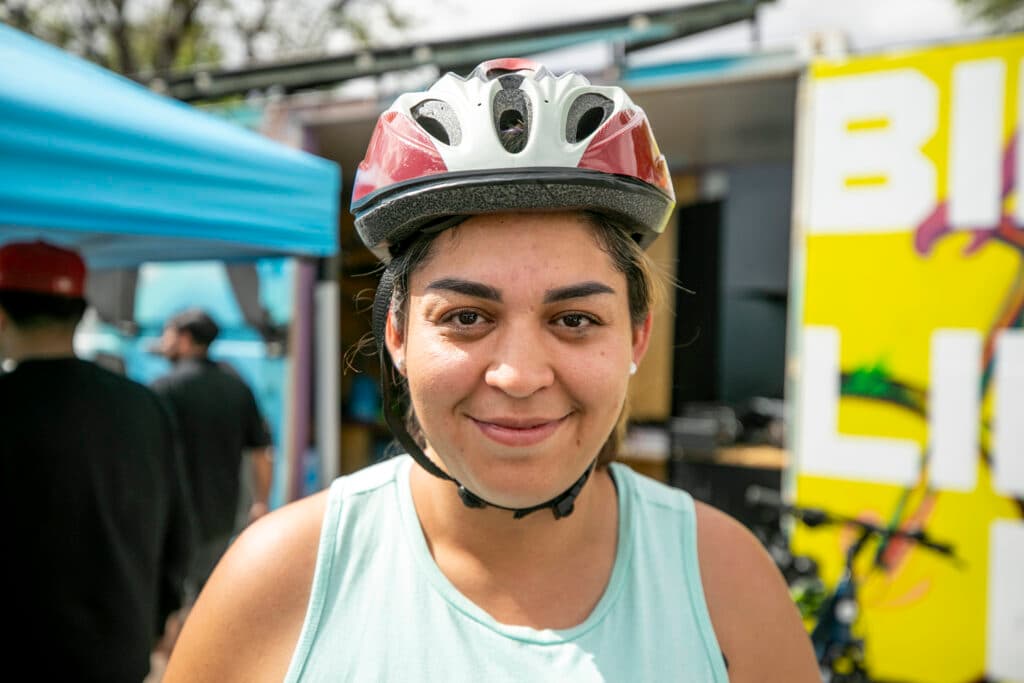
“This really helps families get around from school, work, to the library, even to the grocery store. We really lack grocery stores as well but I think we’re getting there and it’s really positive that we’re getting this right now,” Gallegos said.
She added that as interest in the program grows, and the community continues to demand better for their neighborhood, the next steps are to improve nearby infrastructure: more street lights and bike lanes and better pedestrian crossings.
“I hope parents and community members and anyone in the area knows that you can advocate for what your children, your family and your community needs and it starts with that,” Gallegos said.
